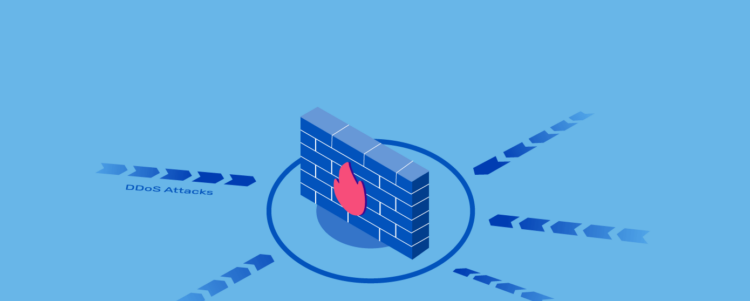We have witnessed significant technological breakthroughs in recent years that reshape how the world operates. These innovations have helped more than just corporations; they have also helped cybercriminals and organized crime groups profit financially and in other ways.
Websites, web apps, and servers—essential components of modern businesses—are high on the list of targets for cybercriminals who devise inventive and novel ways to plan attacks.
In order to defend against these threats, there is a critical need for web app security measures and methods, and a Web Application Firewall has emerged as an essential component of these approaches.
Page Contents
What is WAF?
A security barrier between end users and programs is called a Web Application Firewall. A WAF filters all application access by inspecting all traffic to and from the web application and the return traffic. Monitoring and blocking content that contravenes established policies is the primary goal of WAF.
By safeguarding both the application infrastructure and the application users, a WAF enhances the functionality of conventional network firewalls. Virtual patching is another name for WAF. WAFs allow you to instantly deploy virtual patches when unprotected/unfixed vulnerabilities are found on a website.
How Does WAF Work?

Source: yottaa.com
Web application firewalls are intended to be installed on the application layer, operating as a two-way gatekeeper and analyzing the HTTP/HTTPS traffic entering and leaving the application; the WAF will then take action anytime it finds harmful traffic.
The independence of WAFs from the application while still being able to adapt to changing application behavior is a benefit. Thus, the application will not experience the thousands of false positive threat detections that would have resulted from additional data flows had a new feature been introduced.
A Web Application Firewall can be installed on a dedicated physical server. Even though it is typically considered a stand-alone application, it can also be combined with other networking elements.
Depending on your demands, WAF can provide a higher level of protection and mitigation for the web application by being configured to operate at various levels of inspection, often on a scale from low to high.
Functions of WAF
Here are some essential duties carried out by the WAF:
Offers a comprehensive security mechanism
As was already said, the primary function of WAF is to protect the web app’s safety and online security.
Assist in creating a barrier between the client and the server of the web app

Source: indusface.com
By putting itself in the way of client requests and web app servers, WAF offers protection. By doing this, any risks are eliminated before they may harm the server itself. The added benefit of regular updates applies particularly to cloud-based WAFs. Meaning that if a website faces a new danger, a countermeasure is developed and added to the WAFs to protect other users. Visit lightningcloud.net if you are looking for a cloud-based Web Application Firewall.
Makes ensuring that regulations are obeyed
The WAF’s laws and regulations guarantee that the website can handle many threats that could endanger the web app or its users.
Another crucial element in determining whether the WAF is operating as intended is the policies and the order in which the various rules are given precedence.
Benefits of WAF
Defense Against Threats and Vulnerabilities
Before attacks even reach your website, a WAF mitigates them. A WAF assists in preventing the discovery and exploitation of vulnerabilities on your website by blocking unauthorized traffic and potentially harmful users. Some highly developed WAFs can also aid in protecting against zero-day threats.
DDoS Attack Defense
Attacks known as distributed denial-of-service (DDoS) are intended to flood your website with traffic, blocking access from regular users and maybe exposing security flaws. A managed, intelligent WAF can handle unexpected traffic spikes and offer your website multiple layers of defense against DDOS attacks.
Safeguards client data
If you want to keep your consumers safe, online security is crucial. Customers may suffer significant harm in the event of a hack and your website and business being put in danger.
Hackers not only have the ability to block access to your website, but, in some situations, they can also take client data and login credentials. By making sure that your website’s traffic is controlled and monitored, the Web Application Firewall helps protect client data.
Spend less money

Source: nbcnews.com
The important thing that will enable your company or web application to cut costs is the potential cost of any damage caused by a cyberattack. Long-running legal battles and negative press can put businesses in financial hardship.
WAF can enable you to make resource savings. To manually check site traffic and make sure it’s normal, you won’t require a professional.
Attacks WAFs Defend Against
WAFs shield against attacks at the application layer. This means that WAF will be there and serve as a shield if a hacker attempts to enter a system through HTTP using harmful intent.
The following are some of the attacks that a WAF can stop:
- Unauthorized access to confidential data: Hackers may try to reveal data that is crucial to the website, such as customer or business transaction information.
- Identity fraud: Identity theft is when a hacker takes control of another person to access an online app and perhaps do harm.
- False requests for HTTP: It is possible to access a web app and use whatever vulnerabilities it may have by sending forged HTTP requests.
- Cross-site fraud: This attack explicitly targets web app users who are updating their emails or changing their personal information on another website and asks them to submit their login credentials.
- DDoS attacks: DDoS attacks aim to overload the servers of a web app, frequently by utilizing bots and other tools.
- SQL injections: Using the web app’s database as its target, SQL injections operate.
- Exposing info with high priority: High priority data exposure is favored by corporate espionage since it can make a rival’s competitive advantage obsolete and public knowledge.
Conclusion

Source: reflectiz.com
While a firewall, backup and recovery strategy, and other security measures are essential for keeping a safe environment, a Web Application Firewall can help close any security gaps you may have. It can help safeguard your customers’ private financial and personal information from attacks like SQL injections and DDoS, in addition to safeguarding and potentially improving the performance of your website.





